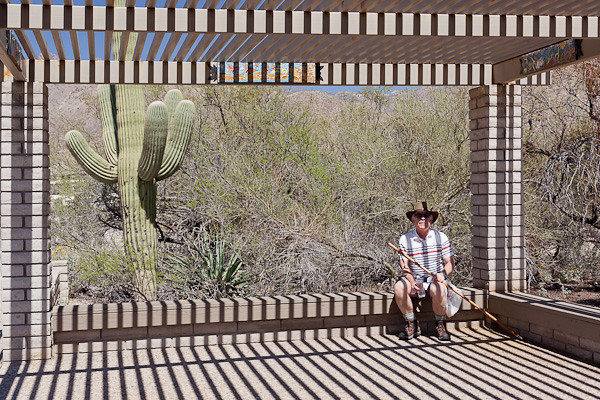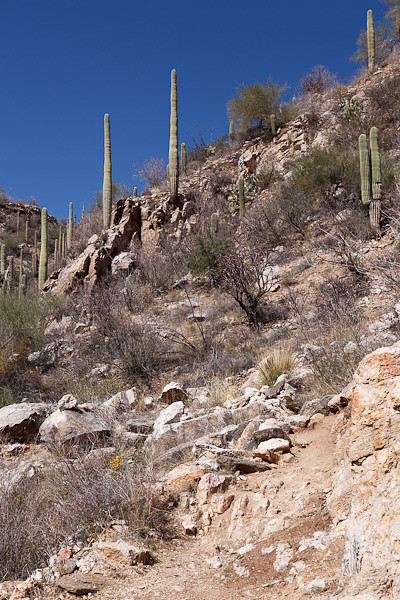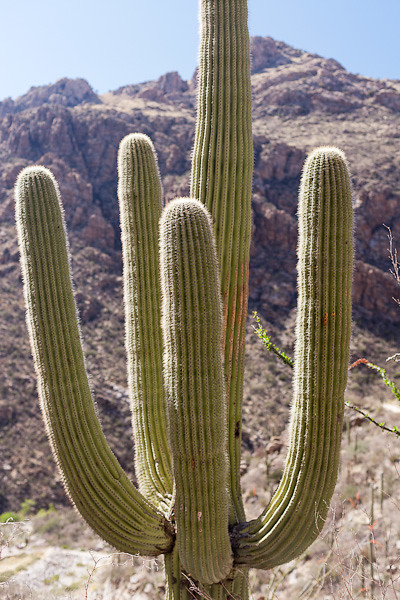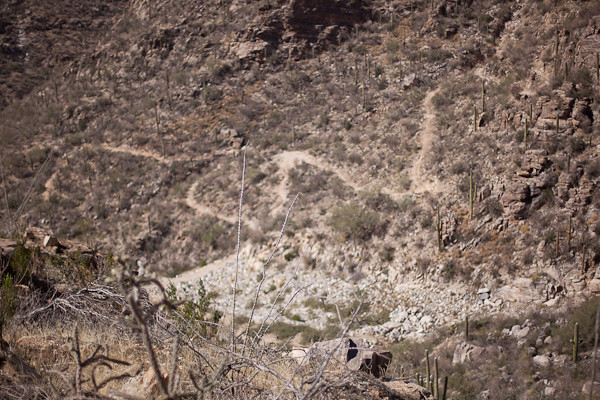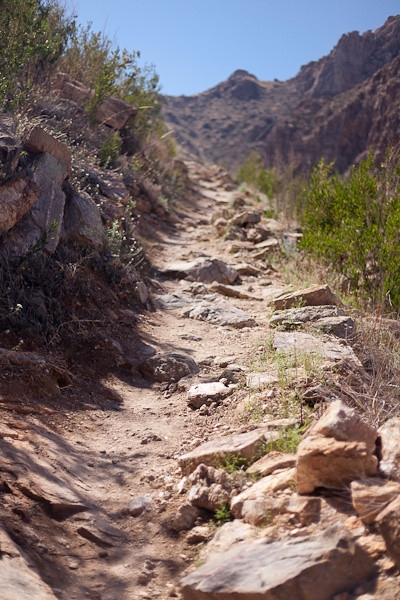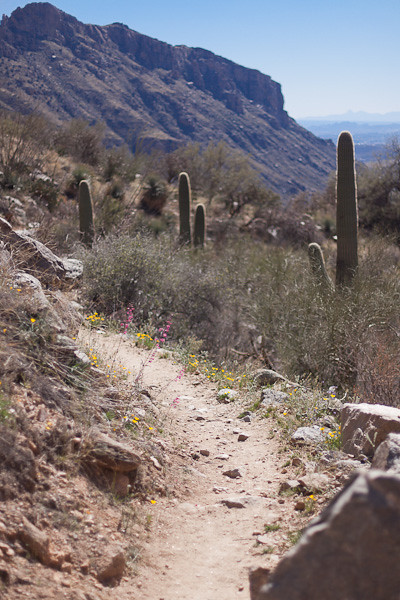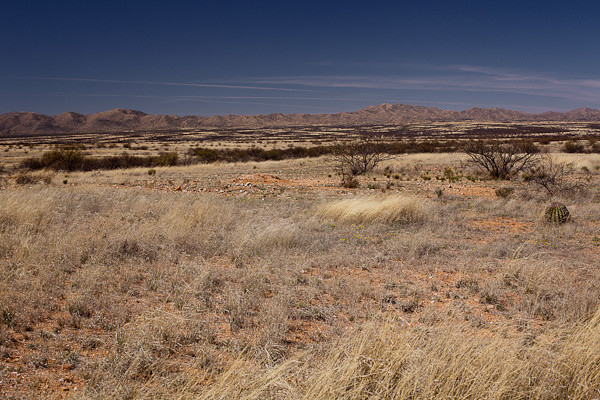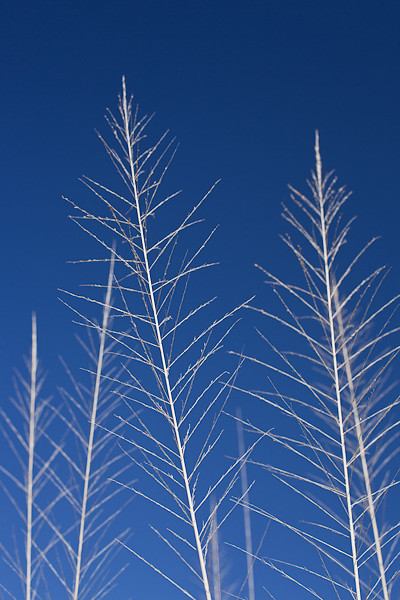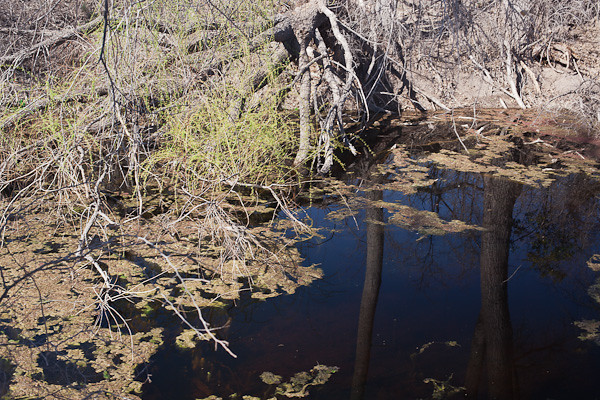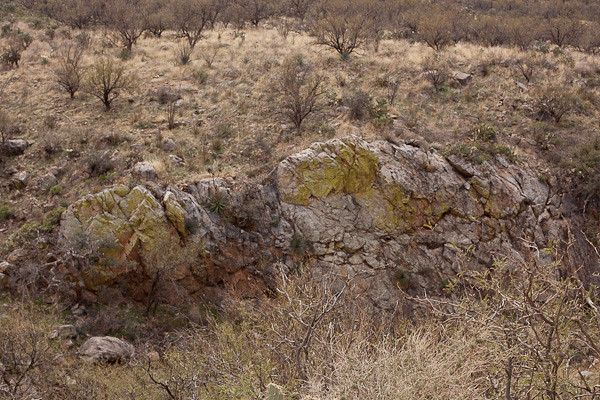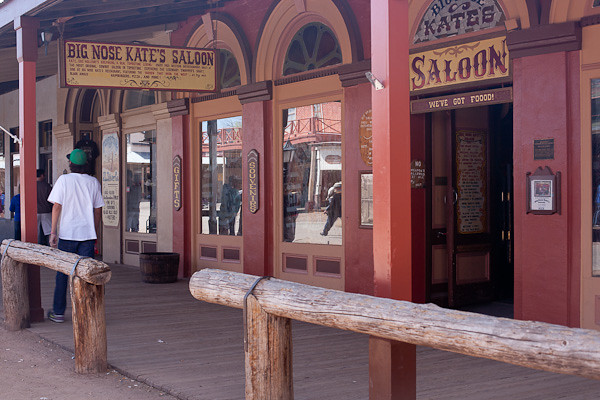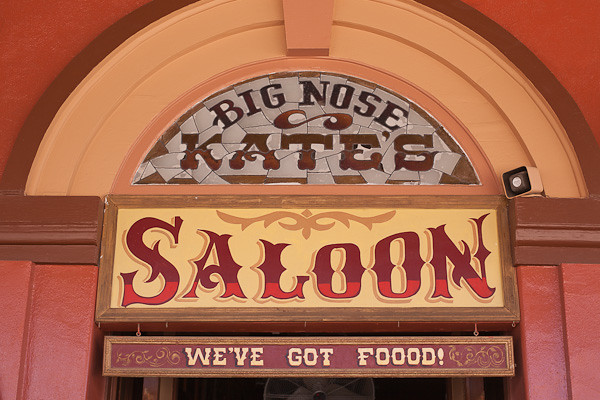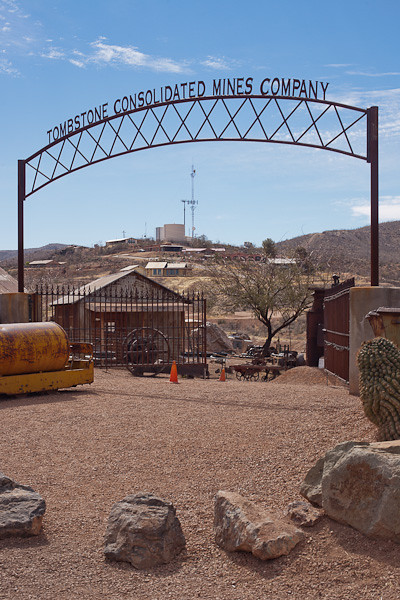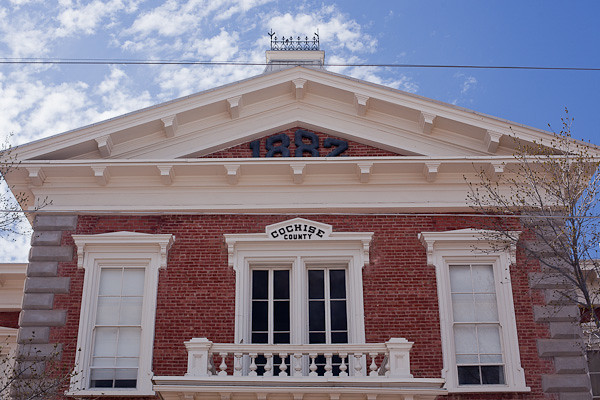On a sunny, 80˚ day in March, Sherpa and I agreed it was a great day for a hike, especially a hike that had a bit of a cheat to it. We hiked the Phoneline Trail in Sabino Canyon, a gorgeous canyon in the Santa Catalina Mountains bordering Tucson. Our cheat was this — we paid a few bucks each for a ride on the shuttle which comfortably took us from the Sabino Canyon Visitor Center to the top of the line, stop #9. We figured once we were up on the mountain, it would be an easy hike down.
I love this photo of Sherpa with the many variations of stripes. Stripe shadows, stripes from the ramada on Sherpa’s shirt, and he’s even wearing a shirt with horizontal stripes. “Yipes, stripes” is right. I was seeing stripes for most of the shuttle ride.
As the tram takes you deeper and deeper into the canyon, the world of natural beauty feels immense. Towering mountains, rocky ledges, saguaro reaching up. This is another sky island, once of several dozen in southern Arizona and northern Sonora, Mexico. Desert at the lowest levels, a juniper, pine, and rocky habitat at the top.
This trail starts at the end of the paved road. A half mile climb of ever-upward-reaching switchbacks takes us to the main Phoneline Trail. Once there, the trail follows the road, only several hundred feet higher. It isn’t a hard hike, but there are gentle ups and downs throughout the “descent” and several hundred boulders to help you climb up or climb down.
Once we climbed high enough, we could look to the north and see Mount Lemmon, the highest mountain peak in the Tucson area. If we had been really ambitious — and 30 years younger — perhaps we would have climbed up and over. But since neither the ambition or the age was happening, we took a lot of long looks from the trail we were on.
There is one tricky thing about hiking on a desert oasis on a mountain trail. The saguaro are conveniently within grabbing distance if one was to lose their balance. I started to reach out for a steadying cactus arm more than once before I realized what I was doing and quickly pulled away. This saguaro was a forty footer, but at my eye level on the trail I could see the upper third in great detail. Wow! Imagine what it will look like in another month, full of white cactus blooms.
We looked back and laughed when we saw the trail we had just hiked, snaking up and down, switch-backing a mere 200 feet in elevation in a half mile.
Rocks, rocks, and more rocks. Careful here to not trip and stumble, as the fall would be a long one. Since this area had a foot of snow earlier this week, the trail was bordered by lots of green — bushes, trees leafing out, wildflowers everywhere.
We both had had our exercise for the day when we reached the picnic area near the Visitor Center. And let me say — my peanut butter and strawberry jam on thick whole wheat never tasted better. And that cold bottle of water — perfect!
———–
Bo Mackison is a photographer and owner of Seeded Earth Studio LLC, is living in southern Arizona, photographing and hiking the sky islands and giving thanks that she can see such sights.
